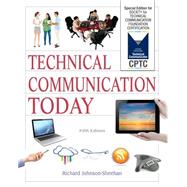ALERT: Before you purchase, check with your instructor or review your course syllabus to ensure that you select the correct ISBN. Several versions of Pearson's MyLab & Mastering products exist for each title, including customized versions for individual schools, and registrations are not transferable. In addition, you may need a CourseID, provided by your instructor, to register for and use Pearson's MyLab & Mastering products.
Packages
Access codes for Pearson's MyLab & Mastering products may not be included when purchasing or renting from companies other than Pearson; check with the seller before completing your purchase.
Used or rental books
If you rent or purchase a used book with an access code, the access code may have been redeemed previously and you may have to purchase a new access code.
Access codes
Access codes that are purchased from sellers other than Pearson carry a higher risk of being either the wrong ISBN or a previously redeemed code. Check with the seller prior to purchase.
T echnical Communication Today was written for introduction to technical communication or technical writing courses taught most often in English Departments.
Writers use their computers to help them think, research, compose, design, and edit. Not only is Technical Communication Today firmly rooted in core rhetorical principles, but the text also presents computers as thinking tools that powerfully influence how we develop, produce, design, and deliver technical documents and presentations.








